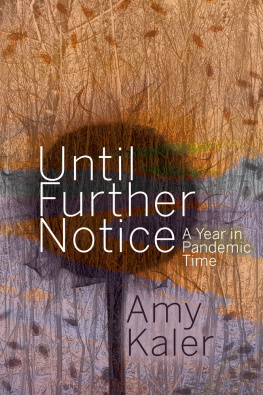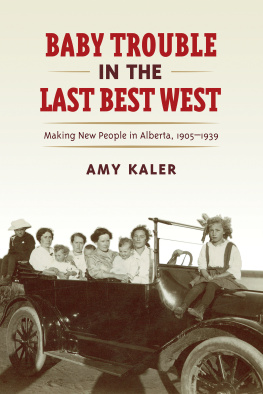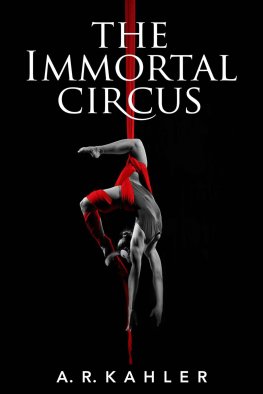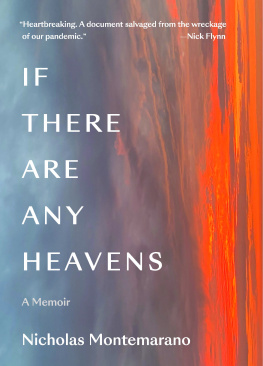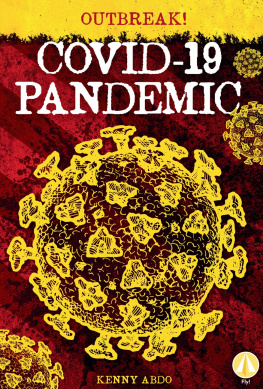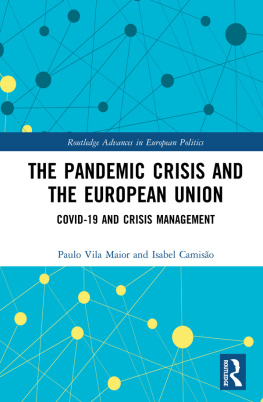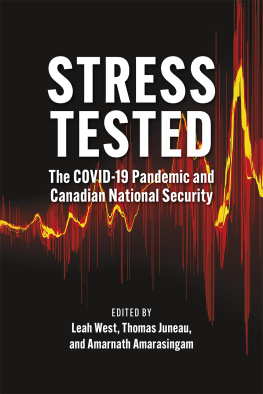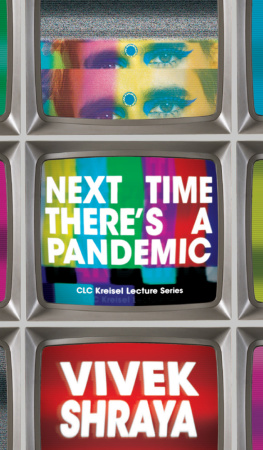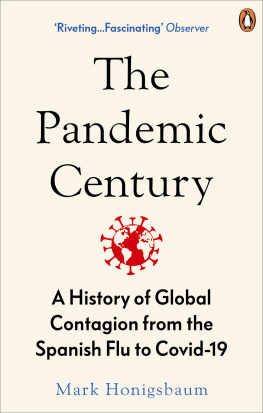

Published by
University of Alberta Press
1-16 Rutherford Library South
11204 89 Avenue NW
Edmonton, Alberta, Canada T6G 2J4
amiskwaciwskahikan | Treaty 6 | Mtis Territory
uap.ualberta.ca |
Copyright 2022 Amy Kaler
Library and Archives Canada Cataloguing in Publication
Title: Until further notice : a year in pandemic time / Amy Kaler.
Names: Kaler, Amy, author.
Description: Includes bibliographical references.
Identifiers: Canadiana (print) 2022025026X | Canadiana (ebook) 2022025530X | ISBN 9781772126259 (softcover) | ISBN 9781772126600 (EPUB) | ISBN 9781772126617 (PDF)
Subjects: LCSH: Kaler, Amy. | LCSH: COVID-19 Pandemic, 2020- | LCGFT: Autobiographies. | LCGFT: Creative nonfiction.
Classification: LCC PS8621.A466 U58 2022 | DDC C818/.603dc23
First edition, rst printing, 2022.
First electronic edition, 2022.
Digital conversion by Transforma Pvt. Ltd.
Copyediting and proofreading by Maya Fowler Sutherland.
Cover design by Alan Brownoff.
All rights reserved. No part of this publication may be reproduced, stored in a retrieval system, or transmitted in any form or by any means (electronic, mechanical, photocopying, recording, or otherwise) without prior written consent. Contact University of Alberta Press for further details.
University of Alberta Press supports copyright. Copyright fuels creativity, encourages diverse voices, promotes free speech, and creates a vibrant culture. Thank you for buying an authorized edition of this book and for complying with the copyright laws by not reproducing, scanning, or distributing any part of it in any form without permission. You are supporting writers and allowing University of Alberta Press to continue to publish books for every reader.
University of Alberta Press gratefully acknowledges the support received for its publishing program from the Government of Canada, the Canada Council for the Arts, and the Government of Alberta through the Alberta Media Fund.

Unless we become aware of the transitions that are occurring all the time within us, unless we learn to let experience play upon our inner lives as on a finely tuned instrument, we will try to manufacture inner intensity from the outside, we will bang our very bones to roust our souls. We crave radical ruptures when we have allowed the nerves of our inner lives to go numb. But after these rupturesthe excitement or the tragedy, the pleasure or the painthe mind returns to what it was, the soul quicksilvers off from the pierce of experience, and the kingdom of boredom, which could be the kingdom of God, begins the clock-tick towards its next collapse.
Christian Wiman, My Bright Abyss
If you see something, say something.
Slogan seen in airports, warning travellers to be alert for signs of danger
Contents
Acknowledgements
Im grateful to Rosie Kaler-Thompson for her resilience and spirit.
I also want to acknowledge the people that made up my in-person social world in Edmonton during the pandemic: especially Michel Figeat, but also Sara Dorow, Cressida Heyes, Jonathan Leggo, Debra Davidson, Rhonda Breitkreuz, Michele Harvey, and Heather Young-Leslie. The people I connected with by screen and phone also meant a great deal to me: especially Jennifer Beeman, but also Martha Easton, Leela MadhavaRau, Heidi Ragsdale, Liz Derbecker, Elizabeth Turner, Rachel Barney, Leslie Beckmann, Beatrice Upenieks, Raina Feldman Wells, Nigel Crawhall, Michael Kaler, Hilary Kaler, Wendy Banks, John Faithful Hamer, and Nadia Tomy.
I remember my father, John Otis Kaler, 19322020. I dont know if he would have liked this book, but I wish he could have read it.
This book was written in Edmonton / amiskwaciwskahikan on Treaty 6 territory, a traditional meeting ground, gathering place, and travelling route to the Cree, Saulteaux, Blackfoot, Mtis, Dene and Nakoda Sioux.
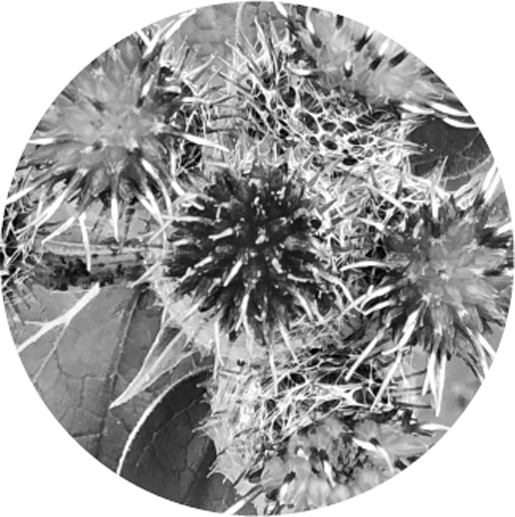
Introduction
When the pandemic began, I decided I was going to write about it. I didnt know what this writing was going to look like, because although I have written books before, I have never set myself a project like this, which begins by telling myself, You are living through a historically significant experience about which you have no choice. You must only try to be a faithful witness to that experience.
This impulse to write grew out of the condition that Sianne Ngai calls stuplimity: the mix of shock and overwhelm with boredom and aimlessness that closes off access to full expression of the grand emotions, like sorrow or anger, and leaves you marooned in the shallow waters of irritation, fretfulness, and anxiety. You can drown in shallow water just as completely as you can drown in a raging ocean storm, and the book youre holding, or rather my idea of this book, is one of the floating things I grabbed onto so as not to drown.
Ngai was writing about visual and literary arts when she came up with the idea of the stuplime, exemplified by slapstick comedy in which banana peels endlessly exhaust the capacity of comedians to fall down and get up again, or art installations consisting of laser printers that spew out variations on insincere apologies hour after hour. Ngai cites Samuel Beckett as the secular high priest of stuplimity, with his dimwitted characters buried up to the neck in stuff that impedes their movement, muttering pointlessly and incoherently while nothing happens. The Covid pandemic gave me stuplimity overload in my daily life.
The tedium of stuplimity is related to its aimlessness and inaction in the face of something enormous. Stuplime affect is the suspension of the possibility of catharsis, the impossibility of working out or working through the enormous thing that has you in its grip. It doesnt translate easily into the kind of purposive action, either personal or political, that I had relied on in previous experiences of low affect or mood.
Stuplimity is depressing, but it isnt depression. It was new to me, and for that reason at least mildly interesting, and so I wanted to write about it, even if I couldnt actually do much about it.
I knew what I didnt want to write. Perhaps in reaction against my training as a social scientist, I did not want to produce a work of social analysis. I did not want to stand back and situate Covid as a case of some broader phenomenon, or to name and detail the structural forces that brought the world to where it is today, shut down and careening and possibly doomed. I know other people will do that much better than I can. I also didnt want to write a sort of dear-diary account of my life during the pandemic day by day. I needed chronology to structure my thoughts (and indeed, time and its measurement would become a major theme in these thoughts), but I didnt want the particulars of my life to be the reason this book exists.
What I wanted to do was to produce an account, or a series of short accounts, of how the pandemic was afflicting my thought processes and my experiences of being-in-the-world, with an emphasis on cognitive warps and distortions. This inevitably meant that I was noting down a lot of small Covid storiesthis happened to me, or to someone I know, on this day, at this place. Here is what I did or saw or heard, and here is where it led me. Heres a motorcycle accident, heres a memory of a TV show, heres a dream, here are things I found in the back of a cabinet, heres an article about the North Pole, heres an odd sensation, which is not exactly embodied but also not exactly not. By putting these stories together, even if they dont fall into a smooth and logical sequence of ideas, I might be able to create some meaning out of this pandemic.
Next page
